In October 1982, Hojatoleslam Seyed Zia Mir Emadi was appointed as the Revolutionary Prosecutor of Shiraz. Immediately after his appointment, he issued an order to arrest 40 Baha’is in the city; they were arrested within two days. They were taken to the detention center of the Islamic Revolutionary Guards Corp (IRGC) in Shiraz and were subjected to harsh interrogations as well as psychological and physical torture.
Thirty-eight days later, he ordered the arrest of another 40 Baha’is in Shiraz. On November 29, the first group of detainees were moved from IRGC detention to Adel Abad Prison and the new detainees took their place in the detention center.
One of the prisoners of that time, whom we shall call Mahan, says: “The prosecutor had decided to arrest 40 Shiraz Baha’is every 40 days and pressure them to change their religion. The second group of detainees had seen the list of who was to be arrested next. Mir Emadi’s plan was to wipe out the Baha’i community in Shiraz through mass arrests of Baha’is. Perhaps it was the international outcry that prevented the arrest of the next group.”
In an interview with a local newspaper, Khabar-e Jonoub, on November 23, 1982, in response to an outcry to the arrests by international human rights organizations, the Shiraz prosecutor repeated the usual claim made by the Islamic Republic about the arrests and executions of a vast number of Baha’is. “We do not arrest people just because they are not believers in Islam,” Mir Emadi said. “The Baha’is who have been arrested are individuals who run organizations and are affiliated to international Zionism.”
And yet, at the same time, Mir Emadi was telling the detained Baha’is that if they renounced their faith and accepted Islam, they would be released. Without this they would receive the death sentence. A few days before executing 16 Baha’is, 10 women and six men, Mir Emadi ordered the Adel Abad Prison chief warden to gather the Baha’is, give them a chance to “repent” and then execute those who refused to convert to Islam.
Rounding Up the Baha’is
On October 23, 1982, agents of the Revolutionary Guards arrested 38 Baha’is in Shiraz with arrest warrants from the prosecutor and took them to the IRGC detention center.
Interrogating the detained Bahai’s had two aims: “renouncing religious beliefs and converting to Islam” and “disclosing the names of other Baha’is.” The masked interrogators insulted, threatened and physically punished the detainees to achieve these goals.
According to Mahan, four of the Baha’i women, including Nosrat Ghufrani Yaldaie and Tooba Gharagozlou Zaerpour, were subjected to harsh corporal punishment.
A former political prisoner, who was a cellmate of the young Baha’i woman Tooba Zaerpour for a time, says: “When they beat her on the soles of her feet, they broke the bones and caused her feet to hemorrhage. The blood had coagulated under her skin and she was suffering from intense pain, so they took her to the clinic and took out the coagulated blood.”
And Olia Roohizadegan, another Baha’i prisoner, at that time, says: “When they transferred Nosrat Yaldaie to Adel Abad Prison, she was extremely emaciated. The next day, when she wanted to take a bath, she asked me to hold her stuff because the bath was very dirty and had no clean place for hanging her clothes or the towel. When she took her clothes off I was extremely horrified because her back was full of blisters as a result of lashings with metal cables. I was so upset. She said, ‘I received more than 200 lashes on my back and the interrogators told me that if I tell my cellmates about it they would lash me again.’”
Baha’i prisoners were forbidden to pray or to perform any religious rites. If prison guards saw them praying, even in silence, they would scold and punish them. Towards the end of their detention at the Revolutionary Guards detention center, Baha’i women were visited by their families twice. Detainees were lined up with their backs to a wall and their families could watch them for one minute from behind a glass partition. Nobody on either side was allowed to signal, smile, shake her head or her hands or speak. After the minute, they would return the detainees to their cells.
In the first group, a total of 12 Baha’i women were arrested, including Mona Mahmoudnejad, Zarrin Moghimi, Tooba Zaerpour, Nosrat Yaldaie, Akhtar Sabet and Simin Saberi.
Transfer to Adel Abad Prison
After 38 days of harsh interrogations, the first group of detainees were transferred to Shiraz Adel Abad Prison on November 29, 1982. On the same day, 40 other Baha’is were arrested and taken to the Revolutionary Guards detention center. Gradually, individuals in this group were also transferred to Adel Abad Prison. Of the 40 in the second group, 12 were women, including Mahshid Niroomand, Shahin Dalvand, Tahereh Arjomandi Siyavashi, Ezzat Janami Eshraghi and her daughter Roya.
“Baha’i women were housed on the third floor,” says Mahan. “Prison officials had named the first floor ‘the penitents’, the second floor “the wobblers” and the third floor ‘the wicked.’ By order of the prosecutor, prisoners of the third floor were denied in-person visits by their families, leaves of absence or even a pardon. In this ward, besides the Baha’is, were detained members of communist organizations such as Peykar. After a while, to break the resistance of the prisoners, they also brought to this ward common criminals such as murderers, thieves, drug dealers, sex workers and so on.”
According to Mahan, the family visits took place once a week on Saturday afternoons, for eight minutes, with a maximum of four immediate family members from behind a glass partition. In certain cases, after the detainees were taken to Adel Abad Prison, sending and receiving letters was allowed, but after two or three months they either did not deliver the letters to families or the inmates were not given letters from their families. Prisoners and relatives stopped writing letters as a result.
After the detainees were moved to Adel Abad Prison, the formal process leading to their trials began. Security and judiciary agents put all their efforts into pressuring the Baha’is to renounce their faith and convert to Islam. Even the prison guards grabbed every chance to speak with Baha’i prisoners to convince them to convert to Islam and to “score points” for their afterlife.
On January 5, 1983, the newspaper Khabar-e Jonoub reported that an “influential member” of the Baha’i community by the name of Hedayat Siyavashi had been executed.
A Visit by the Article 8 Commission
On December 15, 1982, Ayatollah Ruhollah Khomeini, the founder and the leader of the Islamic Republic, issued an eight-point order that set the extent of the authority of government officials, especially judiciary officials, and their boundaries. In early January 1983, the Article 8 administration sent a commission, including representatives from the three branches of the government to Shiraz to investigate how the prisoners were treated and to inspect prisons. It is not clear whether this commission was sent as a result of the many letters and appeals of the families of imprisoned Baha’is.
While the Article 8 commission was in Shiraz, several Baha’is were suddenly released on bail. Whether this commission had anything to do with the release of these Bahai’s or not is unknown. But we know that a number of prisoners’ families went to this commission and asked, in writing, for some action to be taken by the committee.
On January 16, Rouhieh Jahanpour was released by posting a bail of 700,000 tomans. After that, a few other Baha’is were also released on bail. But the bail amount kept getting higher and higher, every day, so the prisoners decided to forgo posting bail so as to be released. Mahshid Niroomand and Roya Eshraghi were among the prisoners who refused to post bail and said that they would stay in prison until their trial. Both were executed on June 18, 1983.
Trials, Tribulations and Death Penalties
Mahan says their trials were anything but lawful: “What happened in the court was this: Judge Ghazaei would only swear at us and, in between, he asked: ‘Islam or execution?’ The trials did not last more than a few minutes and, after leaving the courtroom, we all expected the death penalty.”
On February 12, 1983, the newspaper Khabar-e Jonoub reported a statement by the Shiraz Revolutionary Court that 22 Baha’is had been sentenced to death “on the occasion of the Revolution’s anniversary on February 11.” And, in an interview with this newspaper on February 22, Hojatolislam Ghazaei, head of the Shiraz Revolutionary Court, confirmed the report, saying there is no place for the Baha’is and Baha’ism in the Islamic Republic and warning other Baha’is had to convert to Islam “before it is too late.”
The next day, by the order of Hojatolislam Zia Mir Emadi, the Shiraz Revolutionary prosecutor, Baha’i prisoners, men and women, were gathered in a hall. During the meeting – which he called the “ultimatum meeting” – he said the death sentence of most of them had been upheld by the Supreme Judiciary Council but he had not yet endorsed them. He told the Baha’i prisoners that any Baha’i who renounced “Baha’ism” and converted to Islam would be freed; otherwise, they would be executed. In the end, none of the Baha’is consented to renounce their religious beliefs and Mir Emadi said: “Alright! The issue is settled. You love to become martyrs and we are ready to kill you.”
Why did the authorities not execute all their Baha’i prisoners? “The Sharia judge had told everybody that they had been sentenced to death because they had not renounced ‘Baha’ism,’ so we were all waiting for the death penalty,” says Mahan. “But the Supreme Judiciary Council had not upheld the death sentence against some of us but we did not know this. In April 1983, Ghazaei was replaced by Hojatoleslam Ghanbari and he changed many of the verdicts. But the reality is that the sentences did not follow any clear logic.”
It is the same now too. There are those who are released, even though nobody expected them to be released, while others who are convicted against all expectations. This is true for all prisoners of conscience and political prisoners in the Islamic Republic.
“I can say with confidence that the judge had not read our cases and the sentences were issued by the interrogators,” says Mahan.
Ayatollah Khomeini’s Position
News of the execution of the Baha’is in Shiraz was met with protests around the world. In May 1983, US President Ronald Reagan called on Ayatollah Khomeini to pardon the Baha’is who had been sentenced to death. In a speech a week later, Khomeini announced: “Even if there was no evidence to prove their guilt, Reagan’s support for them proves they are American spies.”
It appears that this speech by the founder of the Islamic Republic hastened the execution of the Baha’is in Shiraz.
On June 13, Torabpour, the chief warden of the prison, summoned Ezzat Janami Eshraghi and Zarrin Moghimi-Abyaneh to his office and asked them four questions: “Are you ready to renounce your beliefs and become Muslims? What is your opinion about the Seal of the Prophet [Mohammad]? You say that you obey government orders and the government considers your faith invalid. Are you ready to obey the government? Considering Reagan’s support for you, do you accept that you are American spies?”
The two women both answered that “We obey government orders as long as these orders are not contrary to our beliefs.”
A day later, on June 14, Torabpour summoned Roya Eshraghi, Simin Saberi, Mahshid Niroomand, Shirin Dalvand, Tahereh Arjomandi and Akhtar Sabet to his office. They were each given a paper that asked only one question: “Are you ready to renounce your belief?” Below the question, they were instructed to repeat their answer four times. All six answered “No” and signed their paper.
16 Baha’is Executed in Two Days
On June 16, 1983, six Baha’i men by the names of Afnan, Eshraghi, Yaldaie, Siyavashi, Haghbin and Azadi were executed. The afternoon of June 18 was the time when the families of the Baha’i women could visit them in prison and this was when they learned about the executions. The husband of Ezzat Janami Eshraghi, Enayatollah, who was also the father of Roya Eshraghi, son of Ezzat Yaldaie and the husband of Tahereh Arjomandi Siyavashi were among those who had been executed.
After the visits, as the prisoners were returning to their ward, the chief warden, who was standing by the door, called the names of 10 of them, separating them from the others and taking them away. These 10 Baha’i women were Ezzat Janami Eshraghi, Roya Eshraghi, Mona Mahmoudnejad, Nosrat Ghufrani Yaldaie, Shahin (Shirin) Dalvand, Mahshid Niroomand, Tahereh Arjomandi Siyavashi, Simin Saberi, Akhtar Sabet and Zarrin Moghimi.
The next day their families learned that they had been hanged. Government agents buried them in the Shiraz Baha’i cemetery without performing Baha’i religious rites and without the presence of their families. A year later the government confiscated the cemetery. In 2014, the cemetery was completely demolished to build a cultural and sports center for the Revolutionary Guards.
One of the inmates remembers that the execution of these 10 Baha’i women shocked and devastated other inmates on the third floor. They were also popular with the common prison population so, a week before the executions, these inmates were moved elsewhere in the prison and were returned to the third floor three weeks after the executions. It is likely that prison officials were afraid the execution of these Baha’i women would lead to unrest or even a riot by the common prisoners.
As a rule, if a prisoner was executed, nobody in the ward was allowed to cry and anybody who did shed tears was punished. Crying was viewed by the jailers as a protest to the verdict issued by the Sharia judge. But after these executions, political prisoners came to the cells where Baha’i prisoners were kept, to offer their condolences. Many showed their distress and cried aloud.
Stories of the Executions
Around 10 days after the execution of the 10 Baha’i women, the guards took a political prisoner by the name of Elaheh to be executed. She was distraught and tried to prevent them from taking her by screaming and crying. Roughly two months later, another political prisoner by the name of Minoo (an alias) was taken to the third floor of Adel Abad Prion. She had spent months in solitary confinement at the Revolutionary Guards detention center.
She told the Baha’i inmates that Elaheh had been her cellmate the night before her execution. Elaheh, said Minoo, had been calm and had told her that when she screamed and cried in the ambulance, the driver shouted at her “Why are you so afraid of death? Learn from the Baha’is,” who were praying together; and one of them, Shirin, had recited a prayer and the others listened calmly.
At Adel Abad Prison, they used ambulances to carry prisoners who were to be executed, while in other cases, such as taking the prisoners to court, a minibus was used.
“An unknown person sent a bouquet of flowers to Shirin’s grandmother,” writes Rahbar Saberi, Simin Saberi’s brother. “Some time later, a soldier came across the grandmother in the streets and told her that he had sent her the flowers and introduced himself as the driver of the ambulance that had taken the Baha’i women to where they were executed.”
According to the Iran Human Rights Documentation Center, the only eyewitness to the executions who has since talked about the event was the driver who took the Baha’i women to Chowgan (“Polo”) Square to be executed. The women were hanged one by one, forced to watch the death of each one before them, and the last was the 17-year-old Mona Mahmoudnejad.
The Iran Human Rights Documentation Center also quotes a non-Baha’i prisoner who says that, in her last night in the solitary confinement ward of the detention center of the Revolutionary Guards in Shiraz, they brought Nosrat Ghufrani Yaldaie and another woman, who was probably Roya Eshraghi, to her cell. Nosrat Yaldaie told her: “We are 10 women, and they will hang us tonight.” According to this non-Baha’i prisoner, early at dawn the Revolutionary Guards came and took the two Baha’i women away. If this testimony is accurate, the 10 women were hanged at dawn on June 19, 1983.
“These women were ordinary people,” says Mahan. “They loved life but they were believers in their faith and stood firm. Ms. Zaerpour told the Sharia judge in the court: ‘Mr. Ghazaei, I love my life but you have given us only two choices: Islam or the sword. Well, I choose my faith.’”
More on Baha’i women who were executed in Shiraz 40 years ago:
#OurStoryIsOne Campaign Unites Baha’i Executions and Gender Equality in Iran
Mahshid Niroomand: Baha’i Woman, 27, Hanged for Her Faith
Roya Eshraghi: The Young Baha'i Woman Hanged with Her Parents
Remembering Two Baha’i Nurses Who Were Murdered Because of Their Faith
Shirin Dalvand: Her Love for Iran Ended at the Gallows
Mona Mahmoudnejad: The 17-Year-Old Baha’i Girl Who Was Hanged After Her Father
“I Endured Immense Suffering, but I Did Not Yield”: The Baha’i Woman Hanged for her Beliefs
Zarrin Moghimi-Abyaneh: A Young Baha’i Woman Executed for Her Faith














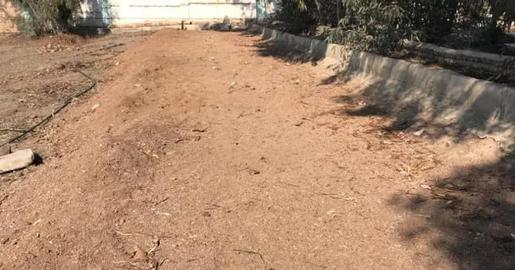
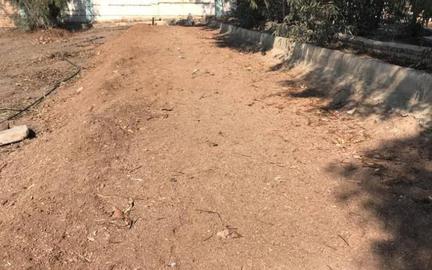

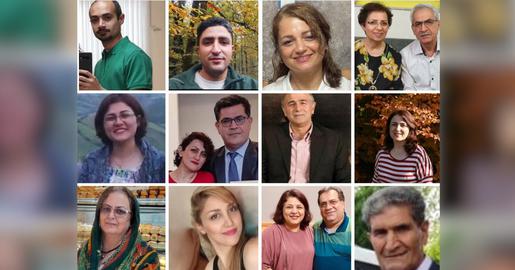
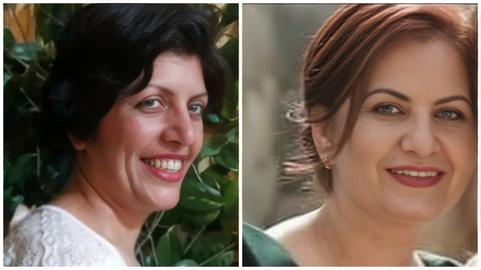

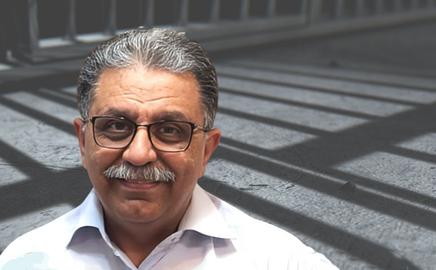

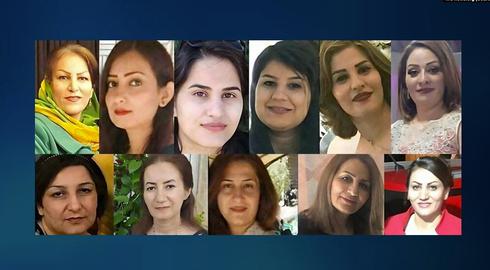
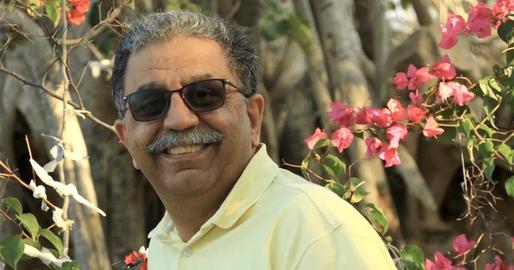


comments